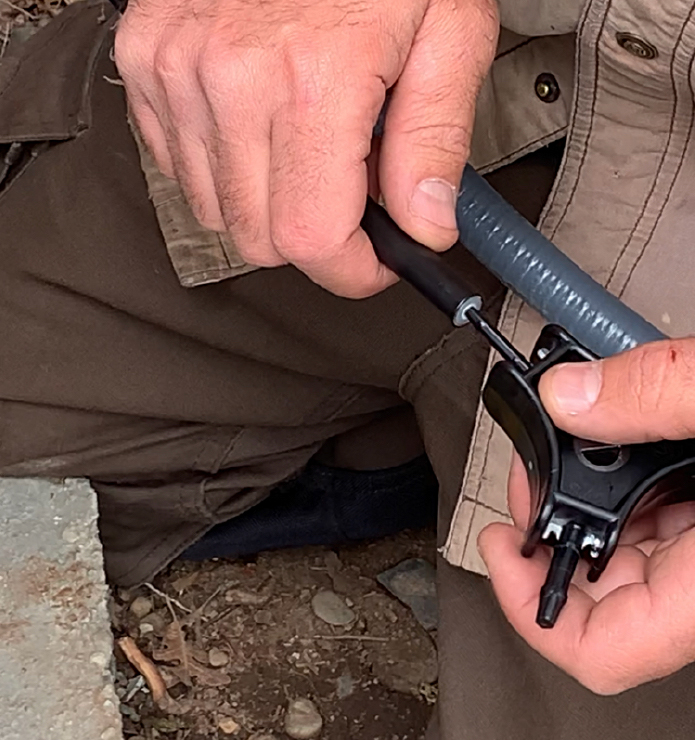FAQs

Can Python fittings be reused?
No, once the Python pipe is inserted onto the nipple and nut is tightened the pipe can’t be removed from the fitting.
Can the Python pipe be cut with aftermarket tubing cutters?
Yes, be sure that the cutting wheel is large enough to cleanly cut through all three layers of the Python pipe.
Is the Python chamfering tool the only way to chamfer the pipe?
Yes, the Python chamfering tool are designed exclusively for the Python pipe.
How do I know if the Python pipe is inserted correctly into the fittings?
The Python chamfering tool has a reference shoulder on the tool, which is used to mark the insertion depth. (Please see the Python Line set Installation Guide)
I don’t have a torque wrench; can I just wrench it tight?
Yes, the Python fittings are designed to be tightened until the nut bottoms out on the adapter body.
Can I use a tube bender on Python?
Yes, but since the OD of the Python lines is larger than that of copper, when using crossbow benders, you’ll need to use one size up. (Also, the 1/4” and 3/8” Python are the same OD and will require the use of the ½” half moon)
What is the minimum bend radius?
- 1/4” and 3/8” is 1-1/2”
- 1/2” is 2-1/4”
- 5/8” is 2-1/2”
- 3/4” is 2-3/4”
- 7/8” is 6”
Will Python kink?
While Python is less likely to kink than copper, it is susceptible to kinking once the minimum bend radius is exceeded.
If the pipe is nicked during installation, should it be used?
The outer layer of the Python line set pipe can be nicked during the installation process as long as the aluminum is not fully exposed. If the aluminum layer is visibly exposed, then the damage section of the pipe should be replaced.
Can you attach temp probes to the Python line to measure refrigerant temperature?
No. Since the Python line have multiple layers which gives the product a slight R value, it’s not recommended to make refrigerant measurements directly on the Python line.
Can Python be buried?
Yes. The Python Line Set product can be used for underground buried applications with sand, dirt, or concrete. Do not bury with a gravel or rock media. The outer PE-RT layer cannot be cut or damaged exposing the inner aluminum layer underground or to the atmosphere. Fittings should not be buried at any time.
What is the hanger spacing requirement for Python?
The UMC Code states the following for refrigeration pipe supports: UMC 1109.6 Support: In addition to the requirements of Section 1105.2, piping and tubing shall be securely fastened to a permanent support within 6 feet following the first bend in such tubing from the compressor and within 2 feet of each subsequent bend or angle. Piping and tubing shall be supported at points not more than 15 feet apart. Hanger: A proper support is one that is designed as a pipe hanger, does not damage the line set during installation and provides full support.
Can Python fittings be enclosed/concealed?
IMC Section 1110.2 Exposure of refrigerant piping system: Refrigerant pipe and joints installed in the field shall be exposed for visual inspection and testing prior to being covered or enclosed. This means that you can enclose fittings and couplers within the piping system as long as these connection points have been visually pressure tested for leaks before enclosing.
Does the through hole of the fittings cause any restriction in flow?
No. The Python line set fitting orifice does not cause any refrigerant flow restriction. The pressures and temperatures were comparable for both the Python refrigeration loop and the copper refrigeration loop on the same HVAC system.
Can you run refrigeration flushing fluids through Python?
Yes. Independent tests have been using flushing fluids.
Is the Python Line set UV rated?
Yes. The Python line set pipe is UV tested to ASTM G154 Cycle 4 and the Python Insulation is UV tested to ASTM G154 Cycle 1.